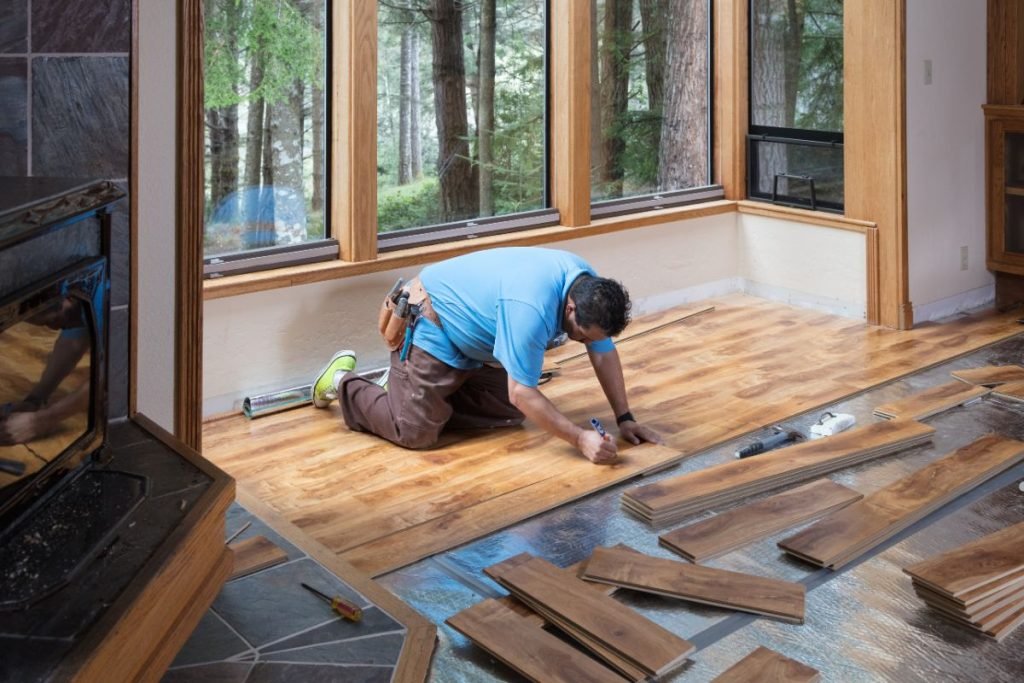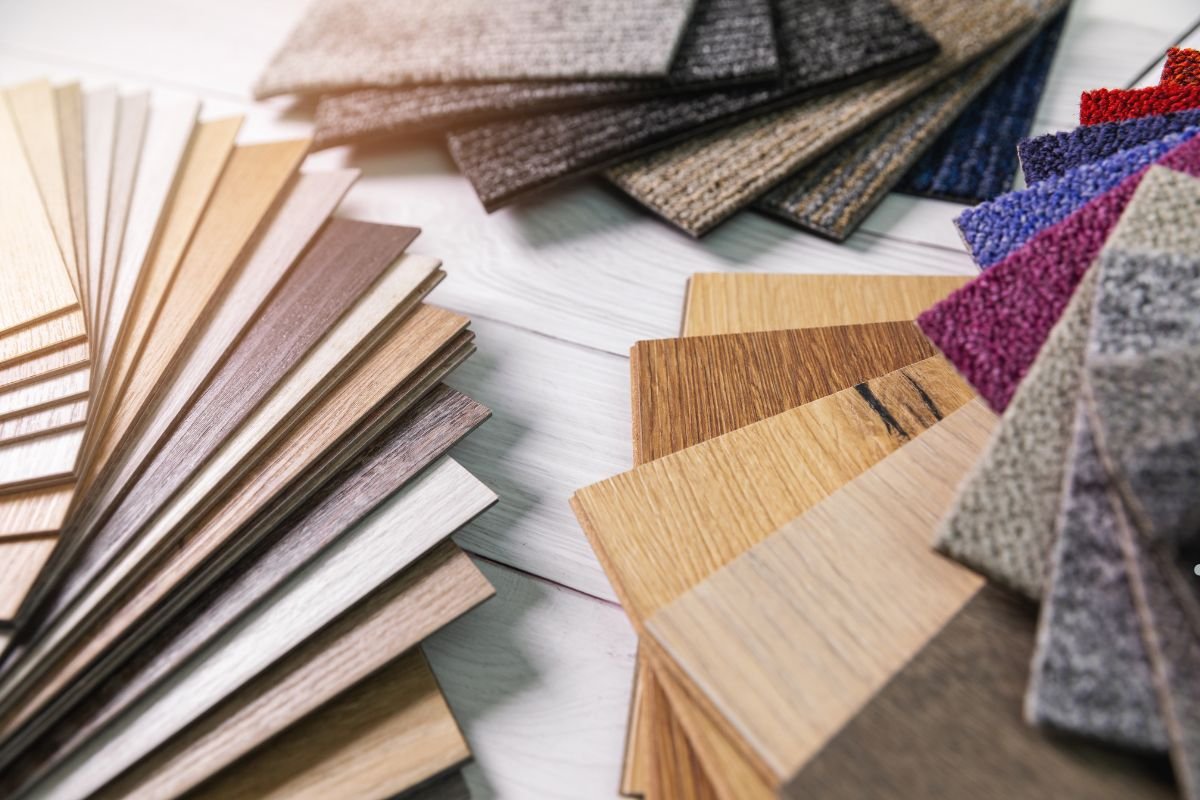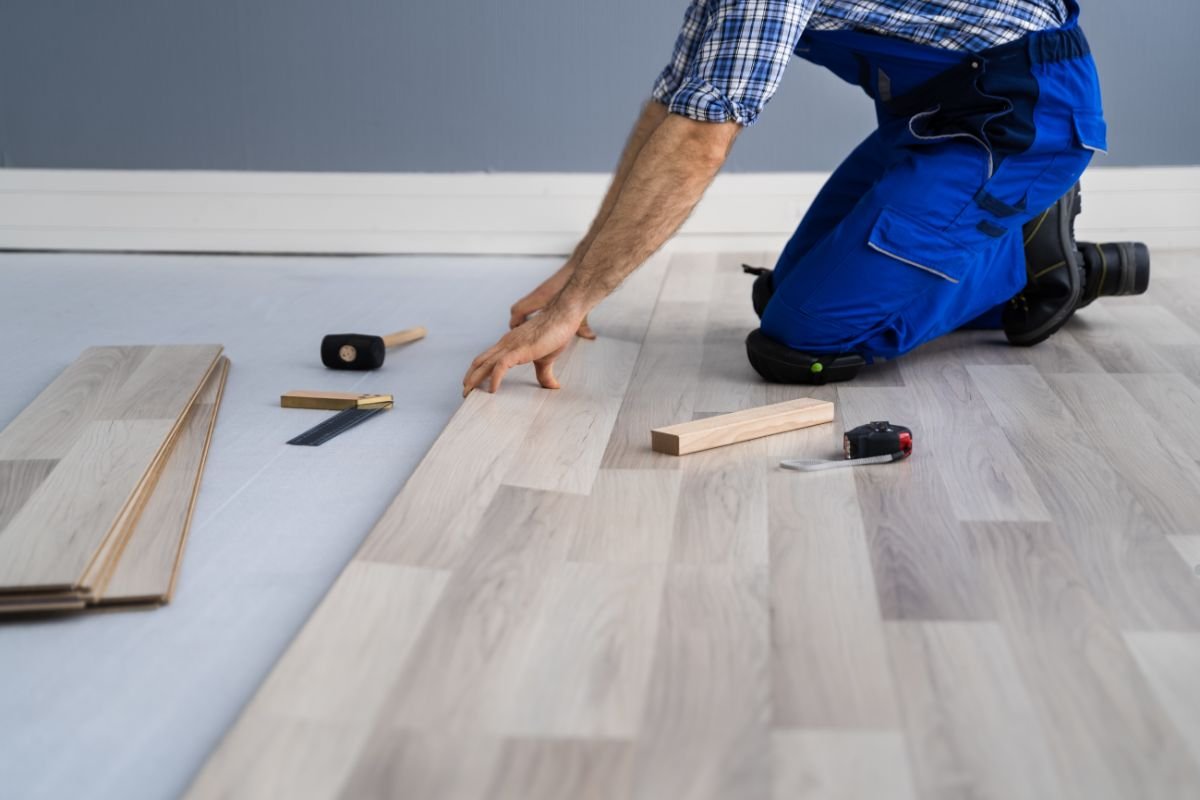
The short answer is: Generally, more than two layers of flooring (including the subfloor) is pushing it and can lead to problems. But let’s dive into why, and what to do about it for your Springfield home!
Understanding Flooring Layers in Springfield Homes
As a Springfield homeowner, you’re likely invested in maintaining or improving your property’s value and comfort. One aspect that often comes up is flooring. Whether you’re renovating, dealing with an aging floor, or just looking to update your home, understanding flooring layers is crucial. Adding layer upon layer seems like an easy fix, but it can lead to a host of issues down the road. This guide will help you determine how many layers are acceptable, when to remove old flooring, and what alternatives you have available.
Explore Our Services to find the perfect flooring solutions tailored to your needs!
The Foundation: What’s Under Your Floors?

Before we talk about adding layers, let’s understand the foundation: the subfloor. The subfloor is the structural base upon which all your flooring rests. It’s usually made of plywood or OSB (oriented strand board). A solid, level subfloor is essential for a stable, long-lasting floor. [Internal link to a page about subfloor repair]. Underlayment, another common component, sits between the subfloor and the finished flooring. It provides cushioning, sound insulation, and a smooth surface for installation. In some cases, a leveling compound may be applied to correct imperfectio ns in the subfloor before any flooring is installed.
Transform your home with stunning, high-quality flooring! From classic hardwood to modern luxury options, we have the perfect solution for you. Call us today for expert advice and a free consultation!
Why People Add Layers of Flooring
So, why do people keep adding layers? It often boils down to convenience and perceived cost savings. Ripping up old flooring is messy, time-consuming, and can be expensive. Simply covering it up with a new layer seems like a quick and easy solution. Maybe you are dealing with outdated tile, old vinyl, or worn-out carpet. Instead of the hassle of removal, homeowners sometimes opt to install new flooring directly over the existing material. In some cases, it’s even done to avoid dealing with minor subfloor imperfections.
The Problem with Multiple Layers of Flooring
While adding layers might seem convenient, it’s rarely the best long-term solution. Multiple layers of flooring can cause significant problems:
- Height and Transition Issues: Each layer adds to the overall floor height. This can create uneven transitions between rooms, making it difficult to walk, and potentially creating tripping hazards. Doors may not close properly, requiring you to trim them.
- Moisture and Mold Concerns: Multiple layers can trap moisture, preventing it from evaporating properly. This creates a breeding ground for mold and mildew, leading to unpleasant odors, health problems, and structural damage.
- Structural Issues: The added weight of multiple flooring layers can put stress on the subfloor, potentially causing it to sag or weaken over time. This can lead to costly repairs down the road.
Looking to enhance your home’s beauty and comfort? The key is right under your feet! Luxury flooring isn’t just about cost—it’s about style, durability, and added home value. Whether you love the classic charm of hardwood, the natural elegance of stone, or the convenience of modern alternatives, there’s a perfect option for every space. Explore the best premium flooring choices for your lifestyle and budget in our detailed guide here.
How Many Layers is Too Many?
As mentioned at the beginning, generally, more than two layers of flooring (including the subfloor and underlayment) is pushing it. Each additional layer increases the risk of the problems discussed above. While there’s no hard and fast rule, prioritize quality installation and proper preparation over simply adding another layer.
When to Remove Existing Flooring
There are times when removing the old flooring is non-negotiable:
- If the existing flooring is severely damaged, rotten, or infested with mold.
- If the subfloor is uneven or structurally unsound.
- If you’re installing a flooring type that requires direct contact with the subfloor (some engineered hardwood or tile installations).
If any of these apply, removing the old flooring is the best course of action to ensure a proper, long-lasting installation.
Wondering how many layers of flooring are too many? Our Springfield homeowner’s guide has the answers! Call us now for expert advice and professional flooring solutions tailored to your needs.
Alternatives to Adding Another Layer
Before you add another layer, consider these alternatives:
- Subfloor Repair: Address any imperfections in the subfloor with patching compounds or subfloor replacement.
- Leveling Compounds: Use a self-leveling compound to create a perfectly smooth and even surface.
- Thinner Flooring Materials: Choose thinner flooring options to minimize the overall floor height.
Professional Flooring Inspection in Springfield
The best way to determine the best course of action for your Springfield home is to get a professional flooring inspection. A qualified flooring contractor can assess the condition of your existing floors, identify any potential problems, and recommend the most appropriate solution. This can save you time, money, and headaches in the long run.

Making the Right Choice for Your Springfield Home
Adding layers of flooring might seem like a quick fix, but it can lead to serious problems. Consider the potential drawbacks, explore alternatives, and consult with a professional to make the right choice for your Springfield home. Prioritize quality installation, proper preparation, and long-term durability over short-term convenience.
FAQs About Flooring Layers
Can I install new flooring over the existing tile?
Generally, yes, you can install certain types of flooring over existing tile, such as laminate or engineered hardwood. However, you must ensure the tile is level, stable, and free of loose or cracked tiles. You may need to use a leveling compound to create a smooth surface. A moisture barrier is also crucial. The added height will also be a consideration.
Is it okay to install laminate over vinyl?
It might be okay, depending on the condition of the vinyl. The vinyl floor must be securely bonded to the subfloor and in good condition. If the vinyl is loose, peeling, or has significant damage, it needs to be removed. Make sure the vinyl is clean and dry before installing the laminate. As always, height is a factor to consider.
How do I deal with height differences between rooms after installing new flooring?
Transition strips are the best solution. These strips bridge the gap between different floor heights and provide a smooth, safe transition. They come in various materials and styles to match your flooring.
How much does it cost to remove old flooring in Springfield?
The cost to remove old flooring in Springfield varies depending on the type of flooring, the size of the area, and the complexity of the job. Expect to pay anywhere from $1 to $5 per square foot for professional removal. Get multiple quotes for an accurate estimate.
Upgrade your space with premium flooring solutions! From elegant hardwood to modern luxury options, we have the perfect fit for your home. contact us today for expert guidance and a free consultation.

